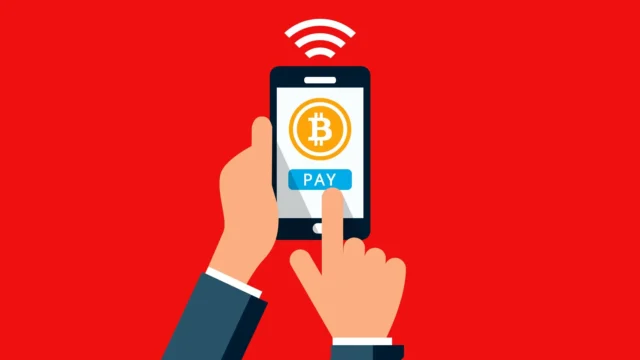
In a dynamic financial landscape where innovation shapes the pulse of the market, there’s an emerging star: Cryptocurrency payment systems. As they stretch their roots deeper into our daily lives, it’s imperative to unwrap their potential.
Let’s embark on a voyage to discover the facets of these systems, their advantages, their inherent challenges, and the promising horizon they offer to the world of finance.
Introduction to Cryptocurrency Payment Systems

Today’s financial world stands at the crossroads of evolution, with digital coins redefining transactional avenues. Cryptocurrency payment systems, at their core, leverage cryptographic protocols to facilitate transactions, eliminating the need for intermediaries.
Historically, centralized entities like banks governed our transactions. However, this new era, punctuated by the digital wave, nudges us towards a decentralized paradigm.
These payment methods, riding on blockchain technology, present an intriguing blend of efficiency, speed, and security. Using a great payment system like PassimPay is the best thing you can do to start your crypto journey strong.
Advantages of Cryptocurrency Transactions
Digital currency transactions are not just a passing fad; they’re reshaping the contours of global commerce. First and foremost, the decentralization aspect offers autonomy from traditional banking systems, ensuring that transactions remain immune to governmental or institutional influence.
Furthermore, with transaction costs often lower than conventional methods, businesses are increasingly looking at them as a viable alternative. The allure of near-instantaneous cross-border transactions, devoid of exorbitant fees or lengthy waits, cannot be overstated. For the global citizen, this promises a seamless experience.
Challenges in Mainstream Adoption

Despite their promising outset, digital currency payments face a slew of challenges. The volatile nature of crypto prices often makes businesses hesitant to embrace them fully, fearing drastic financial losses due to swift market fluctuations.
Yet, it’s not just volatility that casts a shadow. There’s a palpable lack of understanding and knowledge about digital currencies among the general populace. Misconceptions, combined with a lack of robust infrastructure in many regions, make it a rocky road to universal acceptance.
Security and Privacy in Cryptocurrency Payments
An ever-persistent concern in the world of digital currency revolves around security. The decentralized architecture, though revolutionary, can sometimes become a breeding ground for illicit activities. Unauthorized access, fraud, and phishing attempts often plague the arena.
Nevertheless, it’s worth noting that many digital payment platforms are intensifying their efforts to bolster security. Incorporating advanced cryptographic techniques, they’re striving to build fortresses around user data and funds. Privacy, too, is paramount; with pseudonymous transactions, users can experience an enhanced level of anonymity.
Major Cryptocurrencies as Payment Solutions

When discussing crypto payments, Bitcoin inevitably takes center stage, being the vanguard of the movement. With its widespread recognition and acceptance, it has become a favored choice for both merchants and consumers.
Yet, the landscape isn’t monopolized by Bitcoin alone. Altcoins, like Ethereum and Litecoin, are fast gaining traction. Their unique features, coupled with specific advantages like faster transaction times or smart contract capabilities, make them worthy contenders in the payment sphere.
There is an insightful guide from 2024 that addresses the potential reversibility of transactions on the Ethereum network.
Role of Blockchain Technology in Payment Systems
Blockchain, the bedrock of digital currencies, is a distributed ledger system. Its immutability ensures that once a transaction is recorded, it cannot be altered. This inherent transparency fosters trust among users, making it a prime candidate for financial systems.
The ripple effect of blockchain extends far beyond just facilitating transactions. By eradicating the need for intermediaries, it can accelerate the transaction process, ensuring that funds transfer hands with minimal friction. Its potential isn’t just limited to digital coins but extends to sectors like real estate and healthcare.
Regulatory Landscape for Cryptocurrency Transactions
Source: brightnode.ioAs the crypto movement accelerates, regulatory bodies are scrambling to keep pace. Regulations, or the lack thereof, have often been a contentious issue. While some nations embrace digital currencies with open arms, others tread with caution, implementing strict regulations or outright bans.
It’s a delicate balance. On one hand, regulations can bring legitimacy to the crypto domain, protecting users from potential scams. On the other, excessive red tape could stifle innovation, hindering the growth potential of these burgeoning technologies.
Integration of Cryptocurrency in Traditional Finance
Mainstream financial institutions, once wary of digital currencies, are gradually warming up to them. With fintech firms leading the charge, traditional banks and institutions are exploring partnerships, aiming to integrate digital currency solutions within their frameworks.
Such integration not only legitimizes the crypto movement but also paves the way for a more inclusive financial ecosystem. As digital currencies find their way into investment portfolios, credit solutions, and even everyday banking products, the line between traditional and digital finance begins to blur.
Innovations in Cryptocurrency Payment Platforms

The tapestry of the crypto world is ever-evolving, with cutting-edge innovations regularly emerging. Payment platforms are no exception. From introducing Layer-2 solutions to address scalability issues to utilizing smart contracts for automated, condition-based payments, the industry is reimagining the way we transact.
Integration of decentralized finance (DeFi) protocols within payment platforms is another leap forward, allowing users to earn interest or take loans using their digital assets while still having the ability to spend them. Not just limited to the technical realm, innovations also manifest in novel business models.
User Experience and Accessibility in Cryptocurrency Payments
The success of any technology often hinges on its user-friendliness, and cryptocurrency payments are no different. Initially, the realm of crypto was perceived as complex, a playground for tech aficionados.
Fast forward to today, and efforts to enhance the user experience are evident. Wallets and apps with intuitive interfaces, user-guided transaction processes, and multi-language support have become the norm, simplifying interactions for newcomers and seasoned users alike.
Accessibility is another pillar strengthening the foundation of the crypto payments ecosystem. With mobile-based solutions and seamless integrations with other apps, digital currencies are now within arm’s reach for billions.
Final Thoughts

As the sun sets on today’s financial landscape, the dawn of a new era, marked by digital currency payment systems, is clearly visible on the horizon. While the journey promises numerous rewards, the path is laden with challenges.
It remains to be seen how seamlessly this transformation occurs, but one thing is clear: the future of financial transactions is set to be revolutionary.












